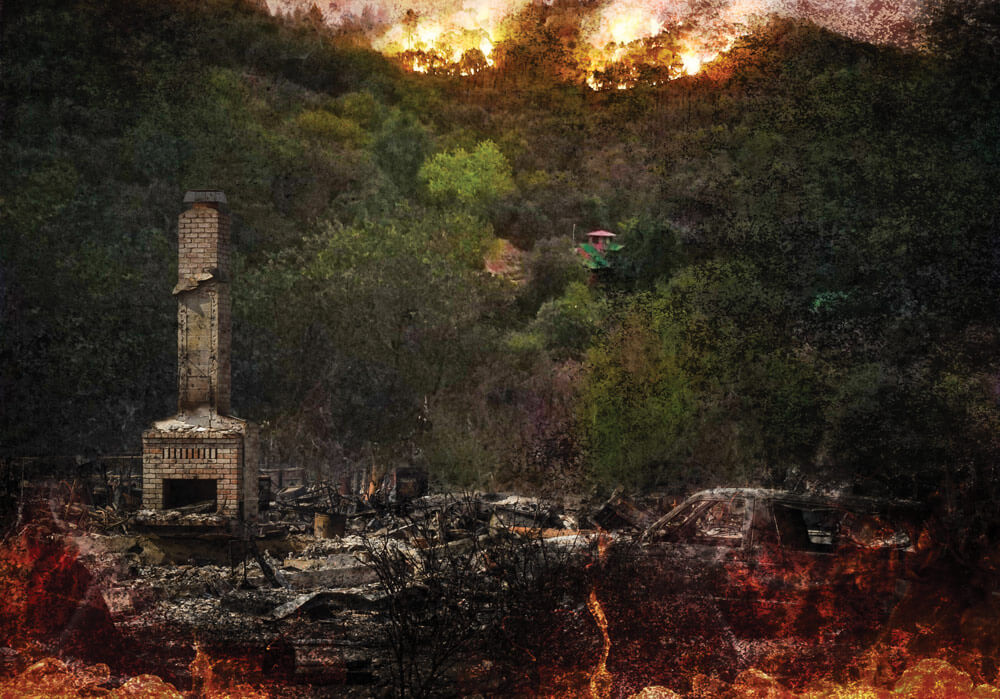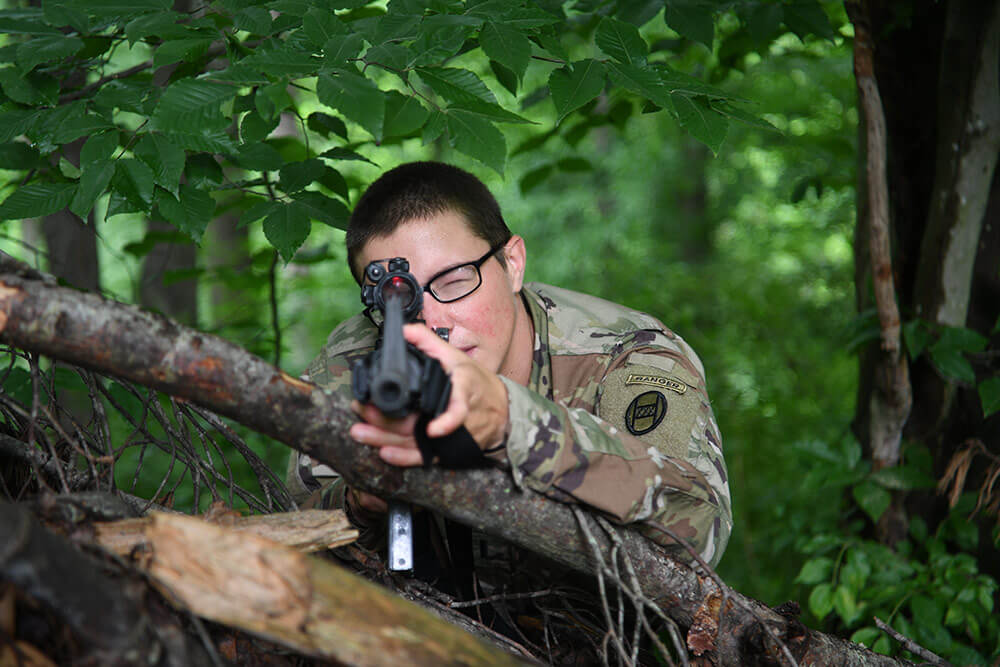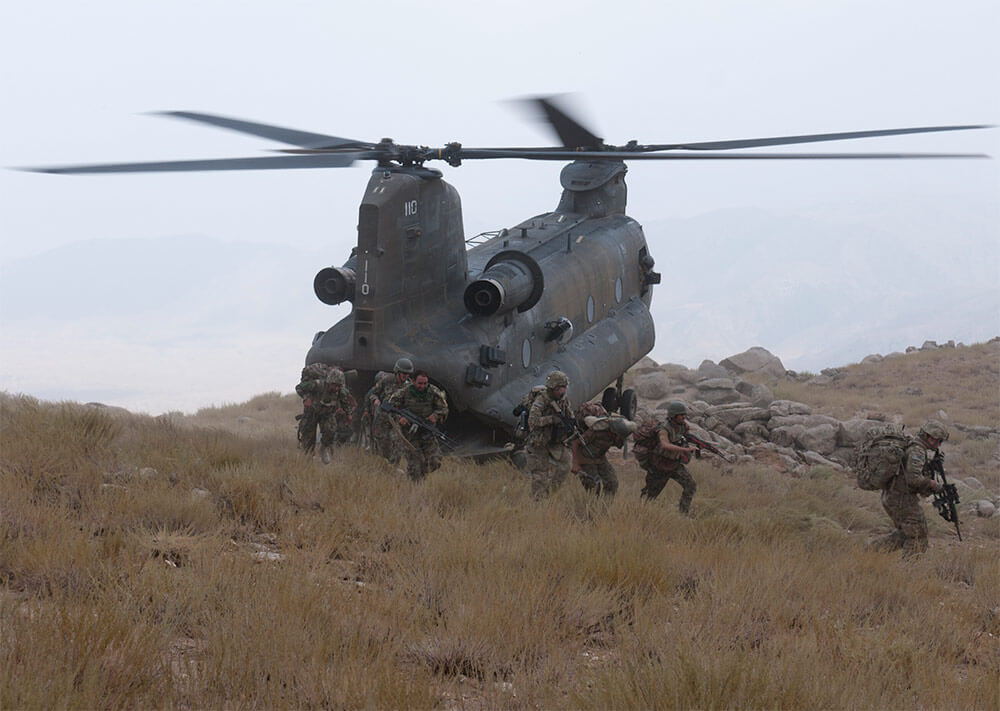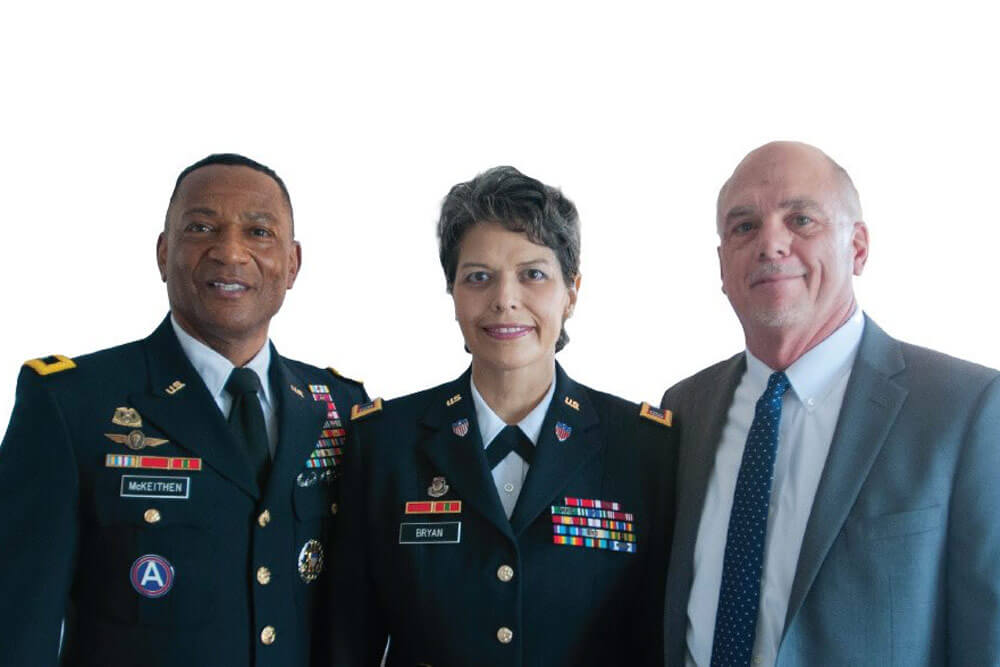How the California National Guard Ignited Hope Amidst Historic Wildfires
Last fall, a series of life-threatening wildfires broke out in Northern California. More than 2,000 members of the California National Guard answered the call to assist in relief and recovery efforts in response to the third deadliest fire season in California’s history.
“I was humbled to help the community,” said 1SG Ramirez. “There was a lot of devastation, but the community was united and grateful. They made us want to do our best to get their cities back in order.”
The series of fires ignited on Oct. 8, burning over 200,000 acres of land and destroying over 8,400 structures throughout the counties of Napa, Lake, Sonoma, Mendocino and Butte. By Nov. 29, there were 44 confirmed deaths from the wildfires. At least 185 people were hospitalized, and 90,000 individuals were evacuated from their homes. The fire series, dubbed the Northern California Firestorm, was made up of several smaller fires including the Nuns, Adobe, Norrbom, Pressley, Patrick, Tubbs, Pocket, Atlas, Lobo and Cascade fires. In an official release by CAL FIRE, California’s agency responsible for fire protection, it was announced that the Tubbs Fire in Santa Rosa was the most destructive wildfire on record in the State of California.

Once it became apparent that the wildfires were continuing to grow at what was becoming an uncontrollable rate, California Governor Jerry Brown issued an emergency proclamation for the counties affected by the massive wildfires. On Oct. 10, California National Guard Soldiers and Airmen were mobilized to join CAL FIRE in the battle against the wildfires.
“It was incredible to see multiple agencies come together,” said 1SG Claudia Ramirez of the 140th Chemical Company. “There was CAL FIRE, the sheriffs, local police, search and rescue and other agencies; I had never experienced something like that where we worked as one to support one mission.”
To say the California National Guard, has had plenty of experience fighting wildfires would be an understatement. California’s hot and dry climate makes it prone to fires ignited by the sun in the State’s many brush areas. California, on average, experiences over 4,000 wildfires a year, according to CAL FIRE statistics. These fires are typically easily managed by CAL FIRE with the help of California Army National Guard when needed. But the historic wildfires of 2017 put the skills of firefighters, even as experienced as those in CAL FIRE and the California Army National Guard, to the test. A mind-boggling two million gallons of water were required to fight the fires. Operating in conjunction with those fighting on the front line of the fires, Guard members used Black Hawk helicopters to drop water and douse flames from above.
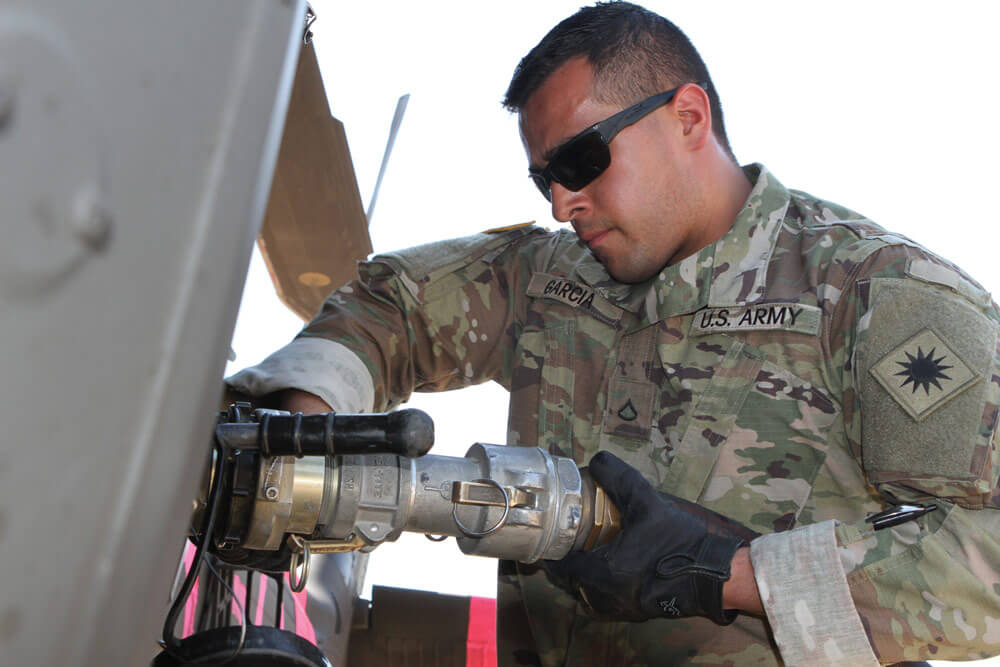
In support of emergency management agencies, when gas stations were without power, the California Army National Guard used their trucks to bring fuel to first responders. They assisted in fueling emergency vehicles and bringing fuel into inaccessible areas. The California National Guard provided engineers, military police (MP), infantry, search and rescue and security to assist in the fight against the deadly fires.
“We assisted with search and rescue, decontamination procedures, guarding evacuation shelters and helped with various logistics at the emergency operations center,” said LTC Chris Angle, commander of the 579th Engineer Battalion.
Once the fires settled, Soldiers and Airmen assisted in searching the affected areas for victims and personal items of displaced homeowners.
“Our primary mission was to search the area for any potential victims that didn’t make it out of their homes,” CPT Estelle Hong, commander of the 235th Engineering Company, told VICE News. “After [that, our job] was collecting valuables found out in the open around the area. That way we could tag them and get them back to the rightful owners.”
During their searches, California Army National Guard members found jewelry, documents, photos and firearms amongst the rubble. Guard members even found a 150-year-old family heirloom belonging to an elderly couple. The heirloom has since been returned to the grateful owners.

“[Recovered personal items] were handed off to the Sonoma County Sheriff’s Office where deputies worked to find the owner,” CPT Hong went on to explain. “I don’t think I could ever fully understand what [homeowners] were going through. Being out here and seeing everything that they’ve ever owned just gone – that’s very tough.”
Like CPT Hong, 1SG Ramirez saw firsthand the destruction the fires left behind. She completed search and rescue missions in Coffey Park, one of the areas most devastated by the wildfires.
Coffey Park, located in Santa Rosa, was scorched by the Tubbs Fire. Strong winds and high flames fueled the Tubbs Fire, making it powerful enough to cross a six-lane highway and progress onward to Coffey Park.
“We were tasked with working with the sheriff for search and rescue,” 1SG Ramirez explained. “When we moved into Coffey Park, and I saw the devastation, that stood out to me. It looked like a scene from a film. Everything was completely wiped out. Homes were completely burnt, and vehicles had melted. It was a shocking sight.”
Worse than their own personal reactions to the aftermath, California Army National Guard members saw the reactions of citizens seeing their homes for the first time since the fires started. Thousands of residents were forced to evacuate their homes with nothing but the clothes on their backs. When residents were able to return to what was left of their homes, it was an emotional scene.
“We experienced homeowners first coming back to their houses after the fires,” 1SG Ramirez said. “Seeing the emotion and devastation [on their faces] – that was a powerful moment.”
The entire 49th MP Brigade was activated to support the fire response efforts in Northern California. They were called to support local law enforcement in Sonoma County and assist agencies under the California Office of Emergency Services. Making this the first time since the 1992 Los Angeles Riots that the entire brigade had been activated.
“The 49th has become the premier unit for civil support on the ground during times of disaster or civil unrest,” said CSM Richard S. Gibson, 49th Operations Command Sergeant Major. “We are trained to quickly alert and mobilize for all hazard response.”
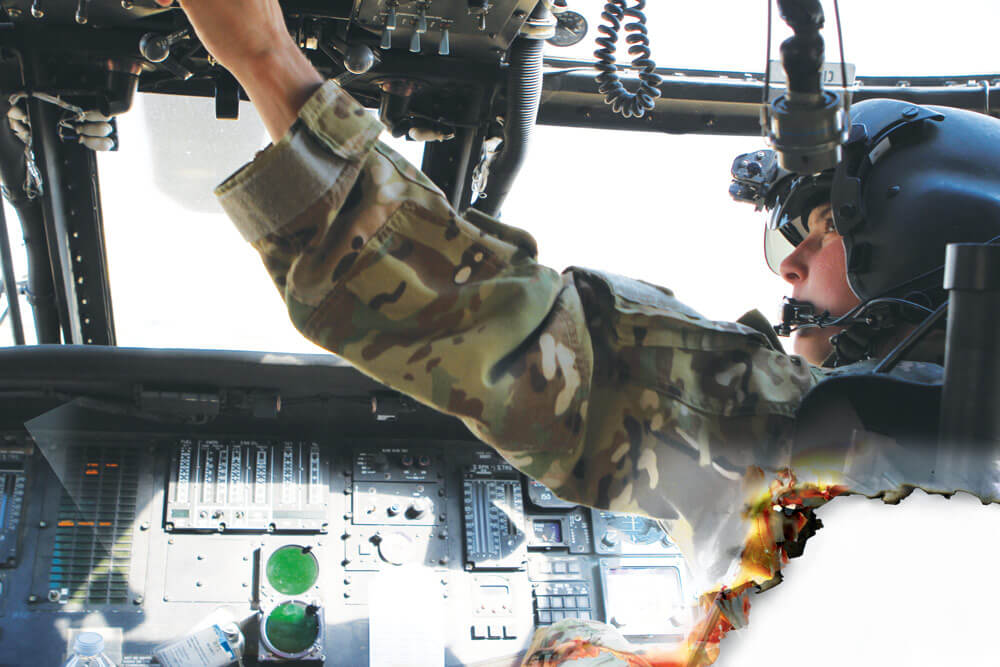
Soldiers from the 49th provided security at evacuation centers, helped control traffic around restricted areas and searched for lost residents. All together, over 600 California Army National Guard members controlled more than 50 traffic control points (TCPs). They assisted in securing evacuation areas to ensure members of the community and their property remained safe and secure.
“Everyone stayed stern at the TCPs,” felt 1SG Antonio Delgadillo of the 149th CBRN [chemical, biological, radiological and nuclear] Company. “There were some people who got irate, but the Soldiers and Airmen defused the situations with a lot of understanding. We remembered that there were those who had lost everything. We felt for them.”
According to Sonoma County Sheriff Rob Giordano, California Army National Guard’s presence and partnership with local authorities gave law enforcement agencies the additional manpower required to appropriately respond to all areas of need during the massive wildfires.
“The California National Guard was invaluable in our response during the fires,” said Giordano. “They were professional and capable. This was the largest natural disaster our county had ever faced. We absolutely relied on National Guard troops and mutual aid to keep our community safe.”
The National Guard’s presence also helped calm potentially hostile situations at evacuation sites, like the Cavanagh Recreation Center in Sonoma County. While the center usually serves as a space for adults to mentor at-risk youth, during the fires, the center was used as an evacuation site for hundreds of displaced residents.
Deborah Dalton, Executive Director of the Cavanagh Recreation Center, noticed tension amongst the evacuees and worried about impending conflicts. The staff at the center began experiencing complaints of stolen water, medicine and clothes. However, the chaos subsided once the 270th and 870th MP companies arrived at the center.
The Soldiers brought order to the center and gave solace to the local citizens. They assisted in organizing evacuees, providing security, carrying in food and other items and answering people’s questions.
“The fact that they were here gave us peace of mind,” Dalton said. “We just weren’t prepared for [the number of evacuees]. This center had never seen anything like it. With the Soldiers here, we could concentrate on what needed to be done [to run the site].”
Language barriers were a major challenge for many affected by the wildfires. Some of California Army National Guard’s bilingual Soldiers served as translators for non-English speaking residents who were in need of public services. Soldiers of the 1040th Quartermaster Company acted as interpreters at Local Assistance Centers (LACs). They explained to victims the process for applying for disaster assistance and answered their questions.
“We were helping put people at ease,” said SPC Rafael Estrada of the 1040th Quartermaster Company. “Some people were afraid to come in and get help, but we explained what they could receive. It just made it easier for everyone when [we] all understood each other.”
“Their help here was invaluable,” said FEMA Region IX representative Eric Simmons. “It’s hard to get people to understand what they’re eligible to receive when we can’t communicate with them. The [National Guard Soldiers] translating bridged the language barrier.”
A unique mission in Napa County brought Soldiers of the 185th MP Battalion to the Sonoma Development Center. The Sonoma Development Center is a State-run center that serves individuals with developmental and intellectual disabilities. When the fires approached dangerously close to the facility, the entire center was evacuated.
“The governor’s office put a huge emphasis on getting this facility up and running again,” said MAJ Andrew Hanson, Executive Officer for the 185th MP Battalion. “The fire got so close, [structures] had minor damage and soot, and every building on the campus reeked of smoke.”
Soldiers were tasked with cleaning the walls and ceilings of the development center, transporting furniture and medical equipment and completing any task needed to help get the center ready to pass public health inspection and return to normal operations.
“A job that would [normally] take a couple of weeks, our task force did in about two and a half days,” MAJ Hanson explained. “It was an interesting mission, and it was quite striking to see the Soldiers’ morale get boosted. It was rewarding because we got to see the residents come back into the facility and back into their home. They were so happy to be back there.”
“We couldn’t have done it without the help of the California Army National Guard,” said Aleana Carreon, Sonoma Development Center Executive Director. “They were so polite and so generous to our staff and to our residents. They were amazing from the first day they got here.”
Looking back at the historic response, MAJ Hanson commented that while most fire response missions take two to four days, the severity of these fires required his task force to remain active for two weeks. He went on to say that, despite the tragedy they were facing, residents showed overwhelming encouragement and gratitude to the Soldiers throughout the entire activation.
“The outpour of community support from the local citizens was mind-blowing,” said MAJ Hanson. “Every day we had people coming by wanting to give us food and different comfort items. It was a constant flow. We had these awesome restaurant owners come by our staging area and ask if they could cook us a meal for over 500 people. They just wanted to thank us in any way they could.”
“I was humbled to help the community,” said 1SG Ramirez. “There was a lot of devastation, but the community was united and grateful. They made us want to do our best to get their cities back in order.”
By Staff Writer Tatyana White-Jenkins
